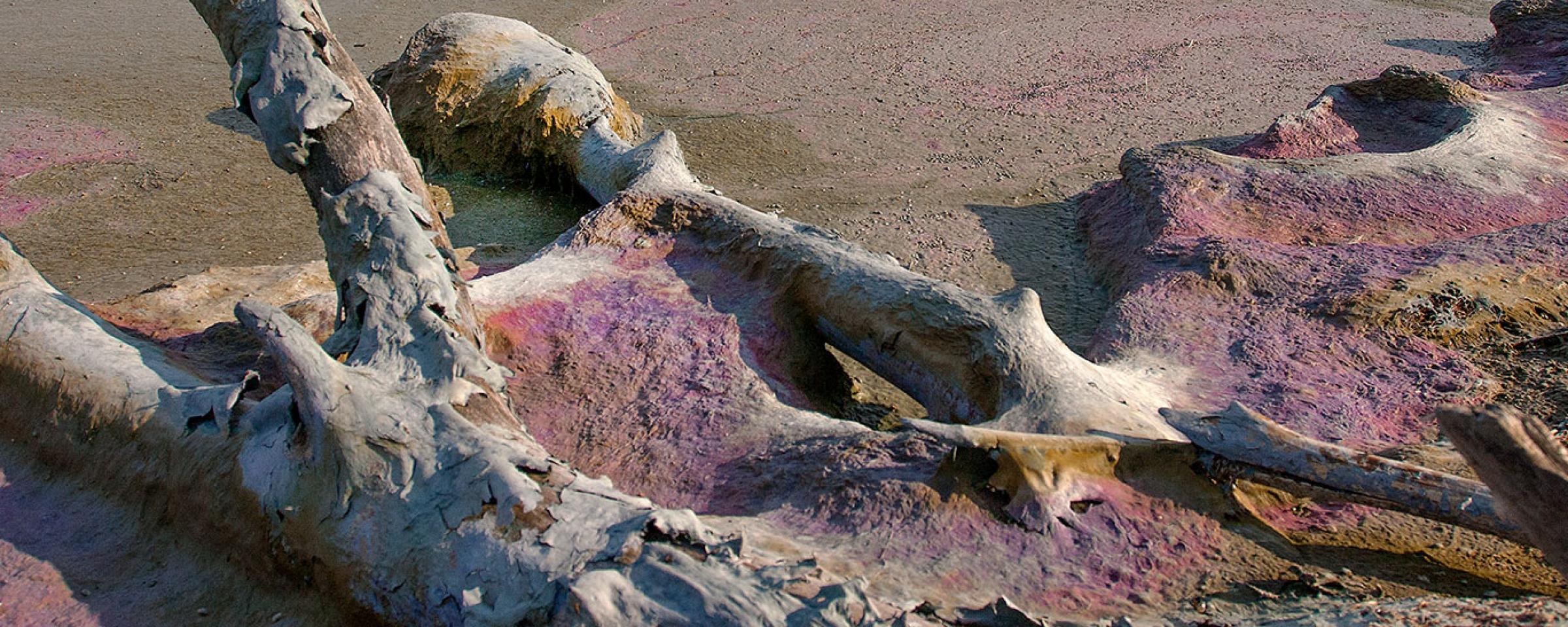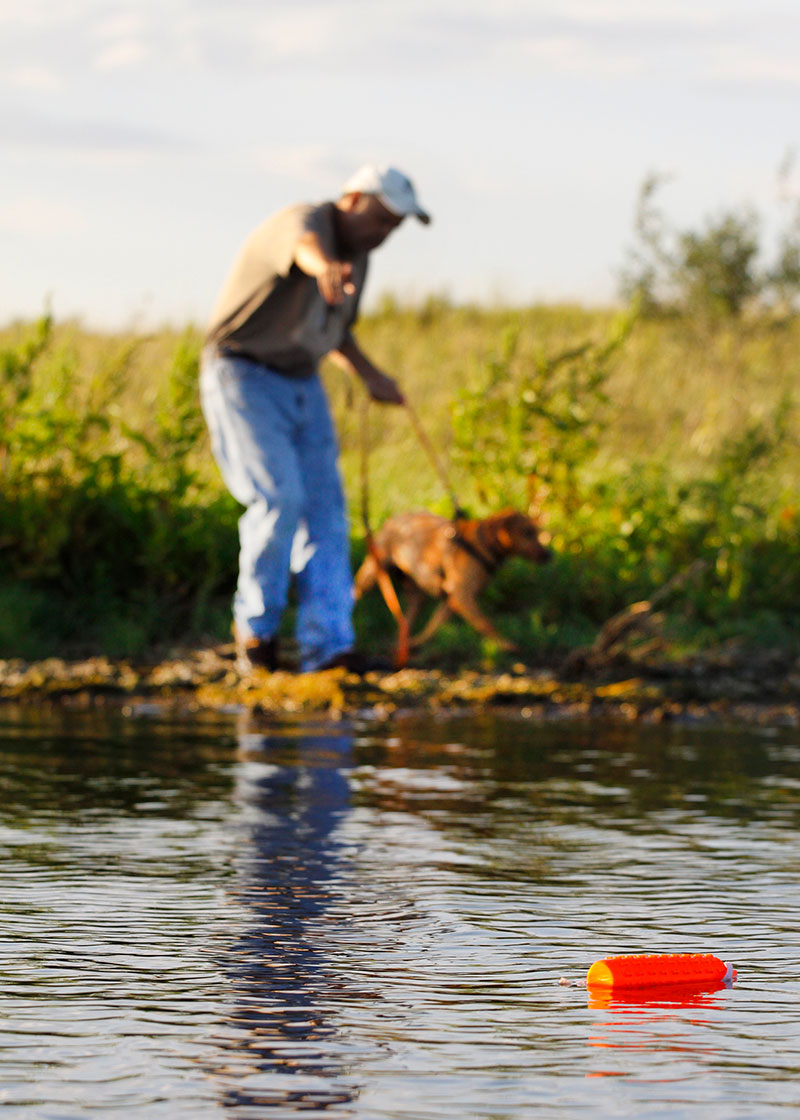
Avoiding Blue-green Algae
Most years during the heat of summer, outdoor enthusiasts are advised to be cautious with their dogs around some waters due to potential health hazards associated with blue-green algae. Ingestion by a dog, even humans, can lead to severe illness, and in extreme cases for pets, death.
In a nutshell, blue-green algae, or cyanobacteria, are microscopic organisms found in water. Potentially toxic blue-green algal blooms occur under conditions of hot, dry weather.
The North Dakota Game and Fish Department generally issues an advisory of this nature in late July, August or September, when the fall hunting seasons are ready to kick off under less than ideal warm weather conditions.
Dr. Dan Grove, Game and Fish Department wildlife veterinarian, said it is usually late summer and early fall when prime conditions exist for blue-green algae growth in many state waters.
“But it only takes a few hot days for blue-green algae to bloom, and we have experienced many days like this already this summer,” Grove said. “Conditions are right for lakes, ponds and wetlands to become contaminated by the toxins produced by the blue-green algae.”

Shallow, stagnant water, with moderate to high nutrient content, provides an optimum environment for blue-green algal growth. Water or wind movements often concentrate blue-green algae along the shoreline, and eventually the bloom appears as a blue-green “scum” floating on the water’s surface. The threat diminishes, but is not completely eliminated, once the weather cools.
And it’s a warning that shouldn’t be taken lightly, Grove said, because when these conditions are present it is not uncommon to receive reports of dog deaths after drinking water where blue-green algae blooms are present.
“Dogs shouldn’t drink or swim in discolored water or where blue-green algal blooms are apparent,” Grove said. “If dogs practice retrieving in these conditions, they should be rinsed off immediately and shouldn’t be allowed to lick their coat.”
In addition to dogs, Grove urges the public to avoid contact with, and most importantly, not to swallow water affected by blue-green algae.
According to Greg Power, Game and Fish Department fisheries chief, “Lakes with an ongoing blue-green algae bloom may not be aesthetically pleasing, but anglers can still fish and eat fish that they harvest. People just need to make sure that they thoroughly rinse the fish and their hands. Thankfully, most people are pretty thorough when cleaning fish.”
In 2016, the North Dakota Department of Health issued advisories or warnings for 15 lakes and reservoirs that experienced blue-green algae blooms with unsafe levels of the toxin in the water. The advisories and warnings were finally lifted the end of October.
The North Dakota departments of Health and Agriculture recommend these steps to avoid exposure:
Respect advisories announced by public health authorities.
Do not swim, water ski, or boat in areas where the water is discolored or where you see foam, scum or mats of green or blue-green algae on the water.
If you accidentally swim in water that might have a blue-green algae bloom, rinse off with fresh water as soon as possible.
The Department of Health also notes that people and animals that swallow water containing these toxins can become sick with severe diarrhea and vomiting; numb lips, tingling fingers and toes; dizziness; or rashes, hives or skin blisters. They say children are at higher risk than adults for illness because their smaller size can allow them to ingest a relatively large dose of toxin. Symptoms can occur as quickly as one hour after ingestion.
For additional information about the effects of blue-green algae blooms, visit the North Dakota Department of Health website, the North Dakota Department of Agriculture’s Animal Health Division at 701-328-2655, or call a local veterinarian.
